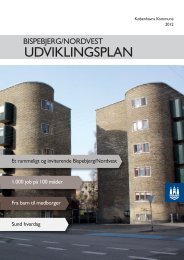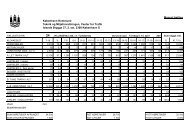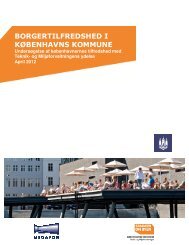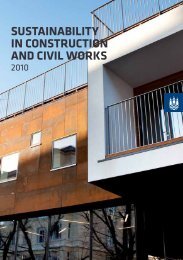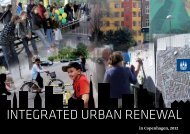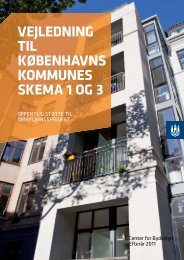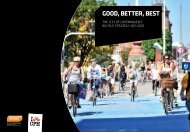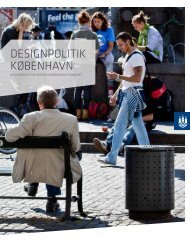OF ARCHITECTURE COPENHAGEN CITY - Itera
OF ARCHITECTURE COPENHAGEN CITY - Itera
OF ARCHITECTURE COPENHAGEN CITY - Itera
Create successful ePaper yourself
Turn your PDF publications into a flip-book with our unique Google optimized e-Paper software.
38<br />
02 <strong>ARCHITECTURE</strong> / FOCUS AREAS<br />
Urban density<br />
Dense urban structures pose a particular<br />
architectural challenge. As one purpose<br />
of density is to promote urban life, the<br />
architecture should promote people’s<br />
desire and ability to use the areas. The<br />
buildings should have access to good<br />
recreational possibilities, but the key<br />
is quality, not quantity. Thus, urban<br />
spaces should be proportioned and designed<br />
with great care. Intimate spaces<br />
and good daylight conditions are a challenge<br />
for architecture, and only some<br />
buildings and building sections should<br />
exceed the familiar Copenhagen scale.<br />
Urban openness and flexibility<br />
New buildings and complexes should<br />
have an open and inviting architecture<br />
and promote accessibility, tolerance<br />
and diversity. New structures should<br />
also not be too conceptually rigid.<br />
As illustrated by the older industrial<br />
architecture in the urban conversion<br />
zones, many architectural qualities<br />
are maintained even if the functions<br />
change over time. A similar potential<br />
for flexibility should be built into the<br />
architecture of the future.<br />
Urban diversity<br />
Diversity is a general goal in the planning<br />
for the City of Copenhagen and<br />
pursued in the dialogue with building<br />
clients. Neighbourhoods should facilitate<br />
the co-existence of many different<br />
population groups. Here, architecture<br />
plays a key role. Urban neighbourhoods<br />
should be highly accessible with a clear<br />
hierarchy of buildings and urban spaces.<br />
They should have a varied architectural<br />
expression to provide character and a<br />
local identity. There should be homes<br />
for residents of different ages and<br />
lifestyles. Urban spaces should feel<br />
safe, with clear and pleasant transitions<br />
between private and public space. And<br />
the architecture should provide open<br />
and inviting places for people to meet<br />
and spend time.<br />
”<br />
New buildings and<br />
complexes should have an<br />
open and inviting architecture<br />
and promote accessibility,<br />
tolerance and diversity<br />
”<br />
… urban spaces should be<br />
proportioned and designed with<br />
great care<br />
”<br />
Neighbourhoods should<br />
facilitate the co-existence of<br />
many different population<br />
groups. Here, architecture<br />
plays a key role



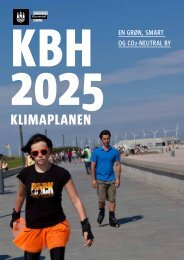
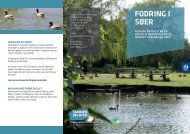
![Lokalplan 301[1] - Itera](https://img.yumpu.com/49288321/1/184x260/lokalplan-3011-itera.jpg?quality=85)
